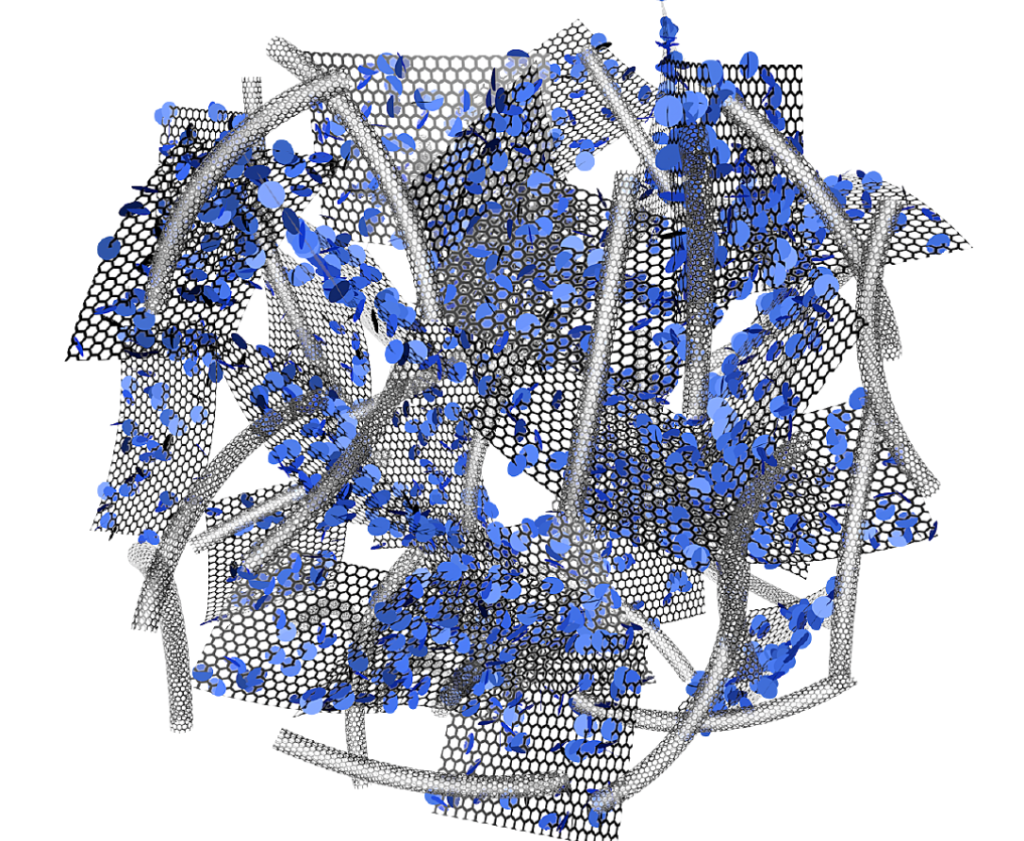The Role of Graphene and Carbon Nanotubes in AI Hardware: Powering the Future of Intelligent Computing
Introduction
Artificial Intelligence (AI) is rapidly transforming industries, from smart manufacturing and autonomous vehicles to edge computing and big data analysis. However, AI’s increasing computational demands require advanced hardware capable of faster processing speeds, higher energy efficiency, and better thermal management. This is where graphene and carbon nanotubes (CNTs) come into play.

Graphene and CNTs, known for their exceptional electrical conductivity, ultra-high-speed electron mobility, and superior heat dissipation properties, are emerging as revolutionary materials in AI hardware. By incorporating these nanomaterials into AI chips, memory devices, and neural network processors, researchers and tech companies are pushing the boundaries of AI performance.
Why Graphene and Carbon Nanotubes for AI Hardware?
Traditional silicon-based semiconductors are approaching their physical limits. As AI applications demand more processing power, alternative materials are needed to sustain Moore’s Law and improve hardware efficiency. Graphene and CNTs offer significant advantages:
- Ultra-Fast Electron Mobility: Graphene enables electron movement 100 times faster than silicon, significantly boosting AI chip performance.
- Energy Efficiency: Graphene-based transistors operate at lower voltages, reducing power consumption and heat generation.
- Superior Thermal Conductivity: AI chips generate substantial heat, but graphene’s high thermal conductivity (~5000 W/m·K) allows better heat dissipation, preventing overheating.
- Scalability and Miniaturization: Carbon nanotubes allow for denser, smaller, and faster transistors, crucial for miniaturizing AI hardware.
Applications of Graphene and CNTs in AI Hardware
1. Graphene-Enhanced AI Processors: Boosting Computational Speed
AI processors require high-speed data processing and efficient energy use. Graphene-based transistors, such as those being developed in IBM and MIT labs, could replace silicon-based transistors in AI chips, achieving:
- Faster AI model training: AI workloads, especially deep learning tasks, require high-speed calculations. Graphene-based chips can accelerate neural network computations, reducing the time needed for training AI models.
- Lower energy consumption: AI processing units (APUs) powered by graphene consume significantly less energy, making AI devices more sustainable and cost-efficient.
2. Carbon Nanotube Transistors for AI Chips
CNTs, which are rolled-up graphene sheets, are being explored as replacements for silicon transistors. CNT transistors have been shown to outperform silicon transistors in:
- Clock speed enhancement: Intel and Stanford University research indicates that CNT transistors can operate at speeds beyond 5 GHz, improving AI processing performance.
- Neural network acceleration: AI inference tasks can be executed more efficiently due to the higher conductivity and low power requirements of CNTs.
3. Memory and Data Storage: Faster AI Model Access
Efficient AI operation depends on fast and reliable memory storage. Traditional DRAM and NAND flash memory face limitations in speed and power efficiency. Graphene-based memory technologies offer:
- Ultra-fast read/write speeds: Enabling real-time AI applications such as voice recognition, image processing, and robotics.
- Lower energy consumption: Prolonging battery life in AI-powered edge devices like smartphones, IoT sensors, and autonomous drones.
- High-density storage: Allowing for larger AI model storage with smaller, more compact hardware.
4. Neuromorphic Computing: AI Chips Inspired by the Human Brain
Neuromorphic computing mimics the way the human brain processes information. This approach requires specialized hardware with ultra-low power consumption and high-speed signal processing.
- Graphene-based synaptic transistors replicate how human neurons function, enabling brain-like AI chips that can process data more efficiently.
- CNT-based neuromorphic circuits allow AI systems to perform complex decision-making with reduced latency.
AI-Powered Smart Manufacturing and IoT Devices
Graphene and CNTs will redefine AI-driven smart manufacturing by improving industrial automation, predictive maintenance, and real-time analytics. Examples include:
- Graphene sensors for AI-driven quality control in manufacturing lines.
- CNT-enhanced edge AI chips for real-time monitoring in IoT networks.
- Graphene heat spreaders in industrial robots to enhance operational stability.
Market Potential and Future Trends
The integration of graphene and CNTs into AI hardware is still in its early stages, but the market is poised for exponential growth:
- AI chip market is expected to exceed $200 billion by 2030.
- Graphene and CNT-based semiconductors are attracting investments from tech giants like IBM, Intel, and Samsung.
- Research in quantum computing and AI acceleration is paving the way for next-gen computing platforms powered by these nanomaterials.
Conclusion
The combination of graphene and carbon nanotubes with AI hardware is a game-changer for the future of intelligent computing. These materials offer higher processing speeds, improved energy efficiency, and enhanced thermal management, making them essential for next-generation AI chips, memory devices, and neuromorphic processors. As technology advances, graphene and CNTs will play a crucial role in reshaping AI-driven industries, from smart manufacturing to autonomous vehicles.
With continuous research and investment, graphene and CNT-based AI hardware will soon transition from experimental labs to commercial AI products, revolutionizing the way artificial intelligence operates in the real world.

